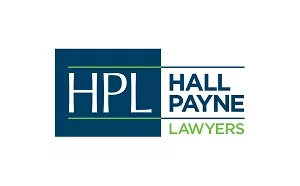If you're in a dispute that may end up in legal proceedings, contemporaneous file notes can be used as documentary evidence to corroborate direct oral evidence of a fact. They can be extremely useful in a variety of different situations, including disciplinary, bullying or discrimination issues in the workplace, as they are generally regarded as a more accurate record of events than oral evidence given months or years after the events.
Contemporaneous notes can be used across many areas of legal dispute where witness evidence is important, including but not limited to:
- criminal law;
- employment law;
- civil litigation; and
- injury compensation matters (eg, worker's compensation, motor vehicle accidents etc.).
In our experience, where there is conflicting witness evidence, and one witness's account is corroborated by a contemporaneous note, that evidence is more likely to be accepted by the Court/Commission/Tribunal.
What is a contemporaneous note?
A contemporaneous note is a written piece of evidence which relates to the facts of a conversation, observation or interaction. It is generally a note taken by a witness during or as soon as practicable after the conversation, observation or interaction has taken place.
Keeping such notes can be beneficial down the track if litigation is commenced, as it could be used by a Court, Tribunal or the Fair Work Commission as evidence to substantiate a particular claim. It can also be used to serve as a reminder of an interaction that occurred, which might be useful, for example, when lodging a formal complaint about those matters.
Although often in written note form, a verbal record (perhaps using a voice app on a mobile phone) or a notes app on an electronic device can also be used as contemporaneous notes. This is on the basis that the note is not later amended once recorded.
What does the legislation say about contemporaneous notes?
Legislation exists at a state and Commonwealth level in regard to contemporaneous notes being used as evidence in litigation. In Queensland, section 92 (which relates to civil proceedings) of the Evidence Act 1977 (Qld) (the Evidence Act) provides that where direct oral evidence of a fact would be admissible, any statement contained in a document and tending to establish that fact will be admissible on certain conditions.
Those conditions are that:
- the person who made the statement had personal knowledge of the matters dealt with in the statement and is called as a witness; or
- the document must have been recorded in the course of an undertaking from information supplied by a person who had, or may reasonably be supposed to have had personal knowledge of the matter.
This is different in criminal proceedings where s 93 of the Evidence Act provides that direct oral evidence of a fact would be admissible.
Any statement contained in a document and tending to establish that fact shall be admissible where:
- the document is or forms part of a record relating to any trade or business made by persons who had personal knowledge of the matters; and
- the person who supplied the information recorded in the
statement:
- is dead, or unfit by reason of the person's bodily or mental condition to attend as a witness;
- is out of state and it is not reasonably practical for their attendance;
- cannot with reasonable diligence be found or identified;
- cannot reasonably be supposed to have any recollection of the matters dealt within the information the person supplied.
In the Commonwealth legislation, the Evidence Act 1995 (Cth), ss 55 and 56 provide that relevant evidence, such as a contemporaneous file note, is admissible if it could rationally affect (directly or indirectly) the assessment of the probability of the existence of a fact in issue in the proceeding. This means, there is a requirement of a logical connection between the evidence provided and the fact in issue. A 'fact in issue' is a fact that fundamentally affects the dispute that is before the Court.
Contemporaneous notes in the Fair Work Commission and QCAT
With matters in the Fair Work Commission (the Commission), section 591 of the Fair Work Act 2009 (Cth) provides that the Commission is not bound by the rules of evidence and procedure. In our experience, this means that contemporaneous notes will almost always be admitted, provided they are of relevance to the issues that arise in the particular case.
The same applies to the Queensland Civil and Administrative Tribunal (QCAT). QCAT is not bound by the rules of evidence under s 28(3)(b), and it may inform itself in any way it considers appropriate, including giving weight to contemporaneous notes.
Different states generally have similar rules, and it is important to check the relevant legislation for each state in state-based litigation.
What should a contemporaneous note contain, and how should you keep them?
If you are taking a note of a conversation you've had, an interaction or an observation you've made, there are some vital things to include in that note.
Those include, but are not limited to:
- date, time and location of the particular event;
- who was in attendance;
- what was said – verbatim if possible;
- what was observed; and
- the date and time the note was taken.
In employment law disputes, if you've had a conversation with your boss or colleague, it can be beneficial to follow up that conversation with an email confirming what was discussed. This also creates a contemporaneous note in the process.
Using electronic means of note-taking, such as emails, text messages, instant messages or using a notes application, will provide details of the metadata (e.g., electronic date and time stamping). This will show a Court or Tribunal exactly when a note was created and that it has not been modified since.
The content of this article is intended to provide a general guide to the subject matter. Specialist advice should be sought about your specific circumstances.


